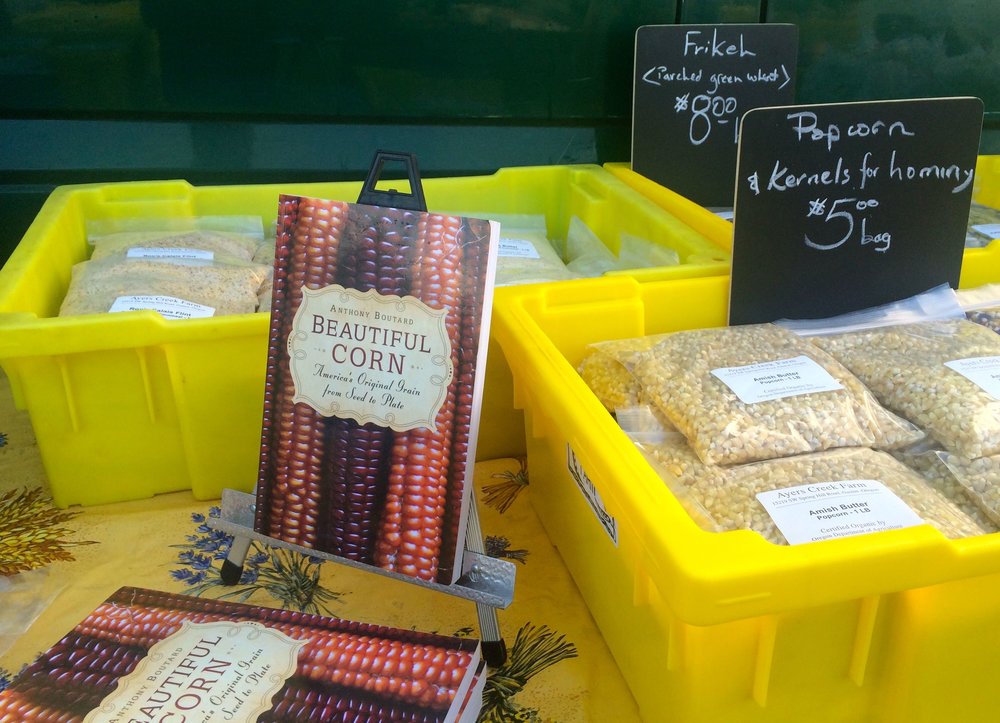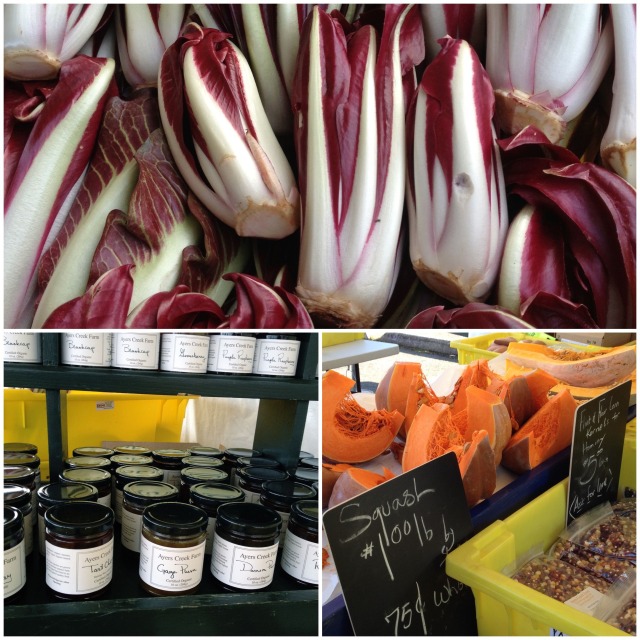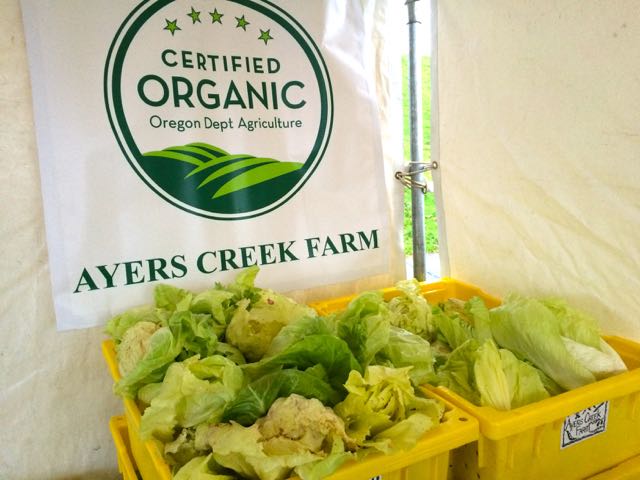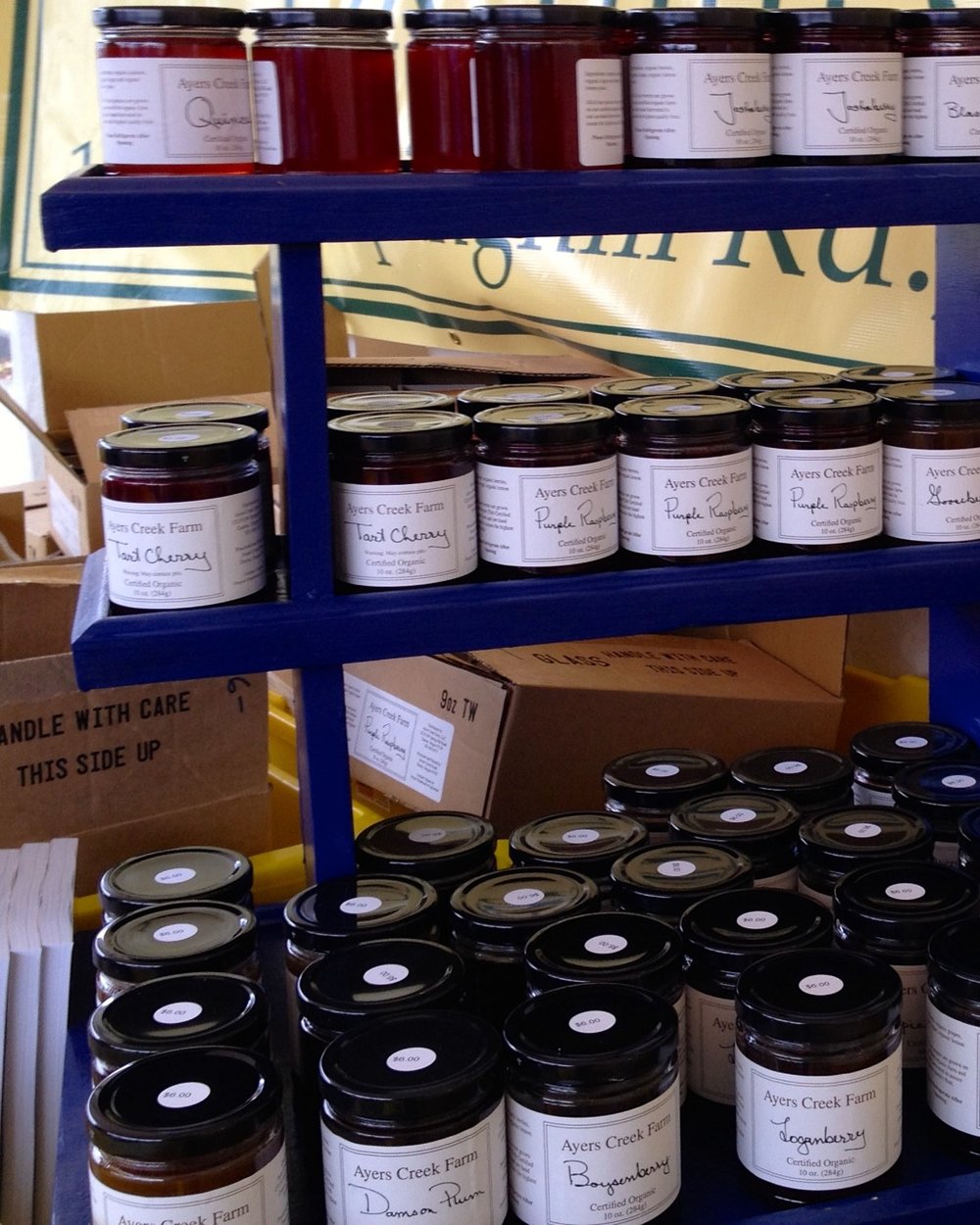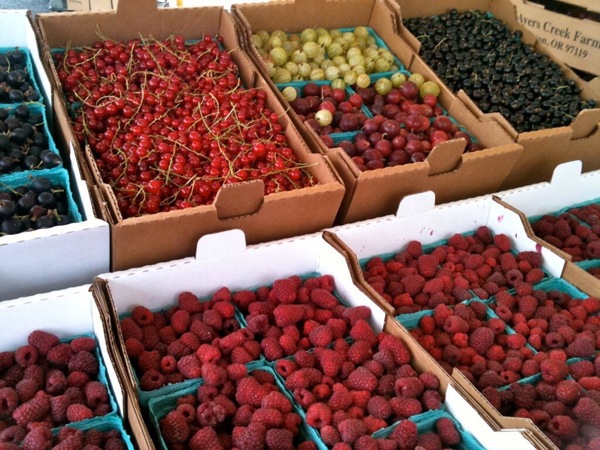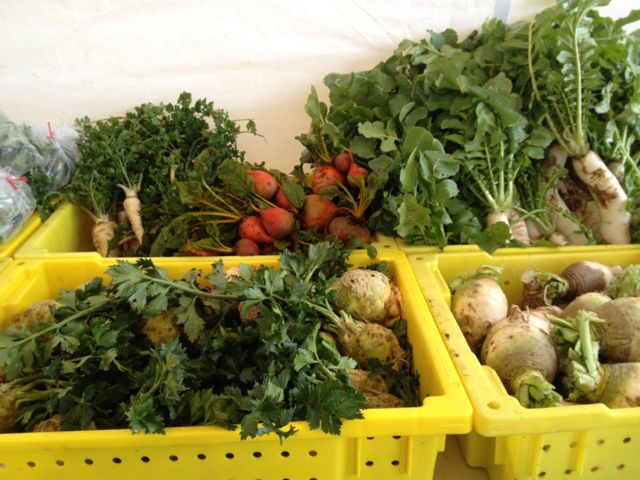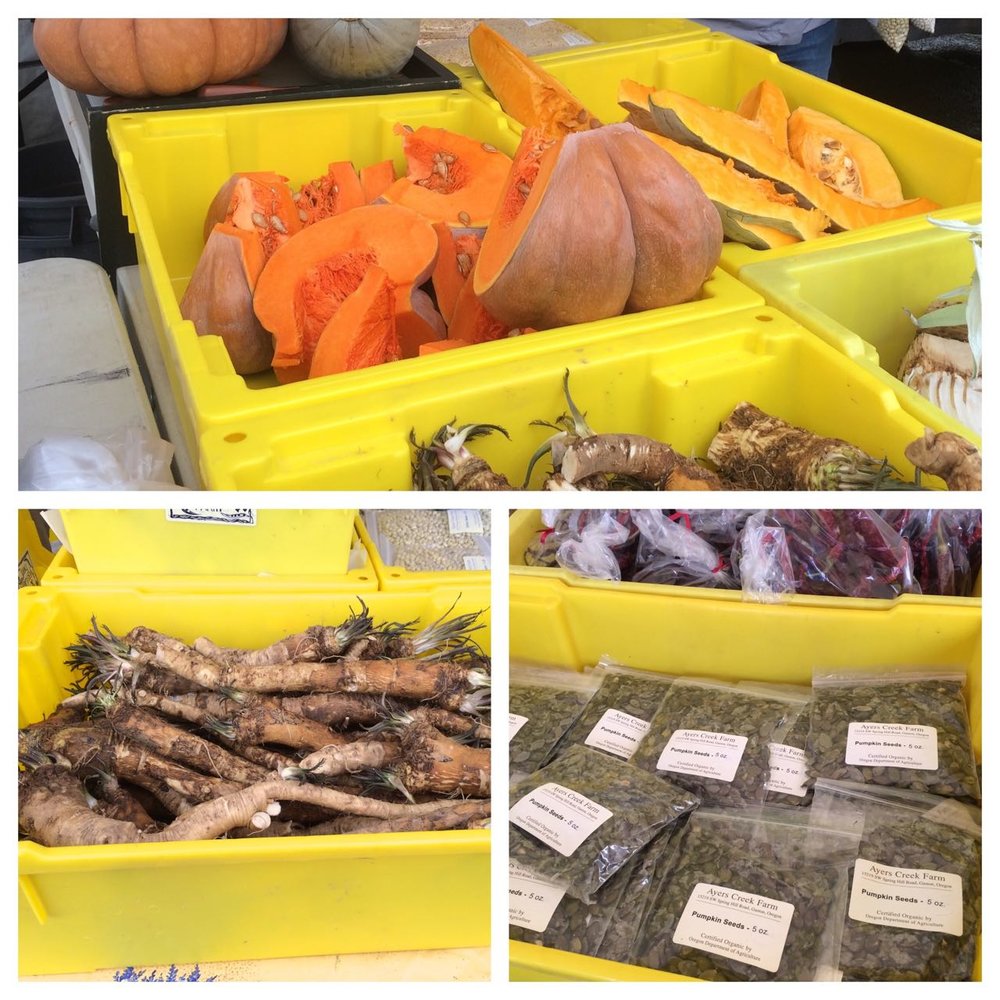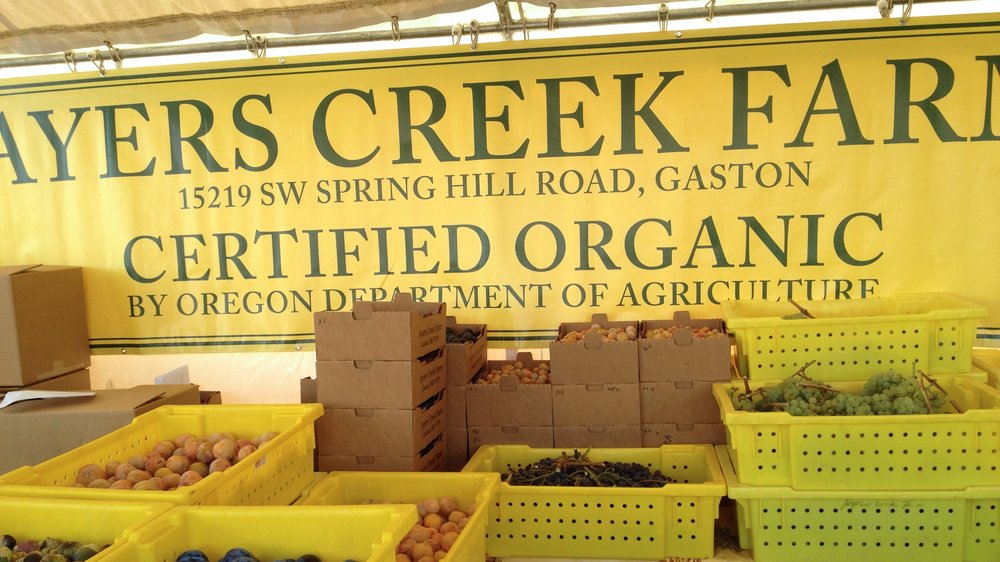Our amorous flickers will be up and drumming on the side of our house as we pour our coffee and tea and prepare to depart for Sunday's Hillsdale Farmers' Market. If we could only train some flickers to drum upon the market bell at 10:00 AM.
Our great horned owl laid her first egg early in this morning, fittingly on Valentine’s Day, and she will spend the next few weeks brooding. Last year, her first egg was laid on the 15th, so she has this thing timed carefully. The second egg will follow in a few days, and that chick will be the smaller of the two. We also getting a bit broody and need to attend to things about the farm, so this is our last market of the winter season.
A few administrative details.
We will return to the market on the 7th of July. If all goes well, we hope to have Field Day at the farm the week before, on the 30th of June. We will send out an email providing details and confirming the event.
No market farmer wants to experience the sting of a disappointed borlotto or popcorn eater. Yet it is hard to predict how many beans, corn or preserves we should bring. For this market, if you want to stock up on corn, popcorn and beans, we will hold six packages/jars or more of your choice. Send an email before noon on Saturday with your request and we will have it set aside.
Here is our annual disclaimer regarding these emails: If you tire of hearing rustic prattle, send an email requesting that we cease and desist, and we will drop you ever so gracefully from the recipients' list.
If you run short of summer's essence in a jar and Brand X disappoints, remember our Ayers Creek Farm preserves are carried at these fine establishments that do not require a UPC code:
Cheese Bar, 8031 SE Belmont St.
City Market, 735 NW 21st Ave.
Foster & Dobbs, 2518 NE 15th Ave
Foxfire Teas, 2505 SE 11th Ave., #105
Gaston Market, Gaston, OR
Pastaworks, 3735 SE Hawthorne Blvd
Peoples Cooperative, 3029 SE 21st Ave.
Vino, 138 SE 28th Ave.
Give Portland (www.giveportlandgifts.com), puts together stylish gift baskets with our preserves and other foods prepared in Portland.
Here is what we will bring, more or less:
Greens: Chic late Treviso-type chicories and any other gratifying greens the field will yield for this last market. The first of March is Saint David's Day which is celebrated by wearing a leek about the neck. We will provide suitable raiment.
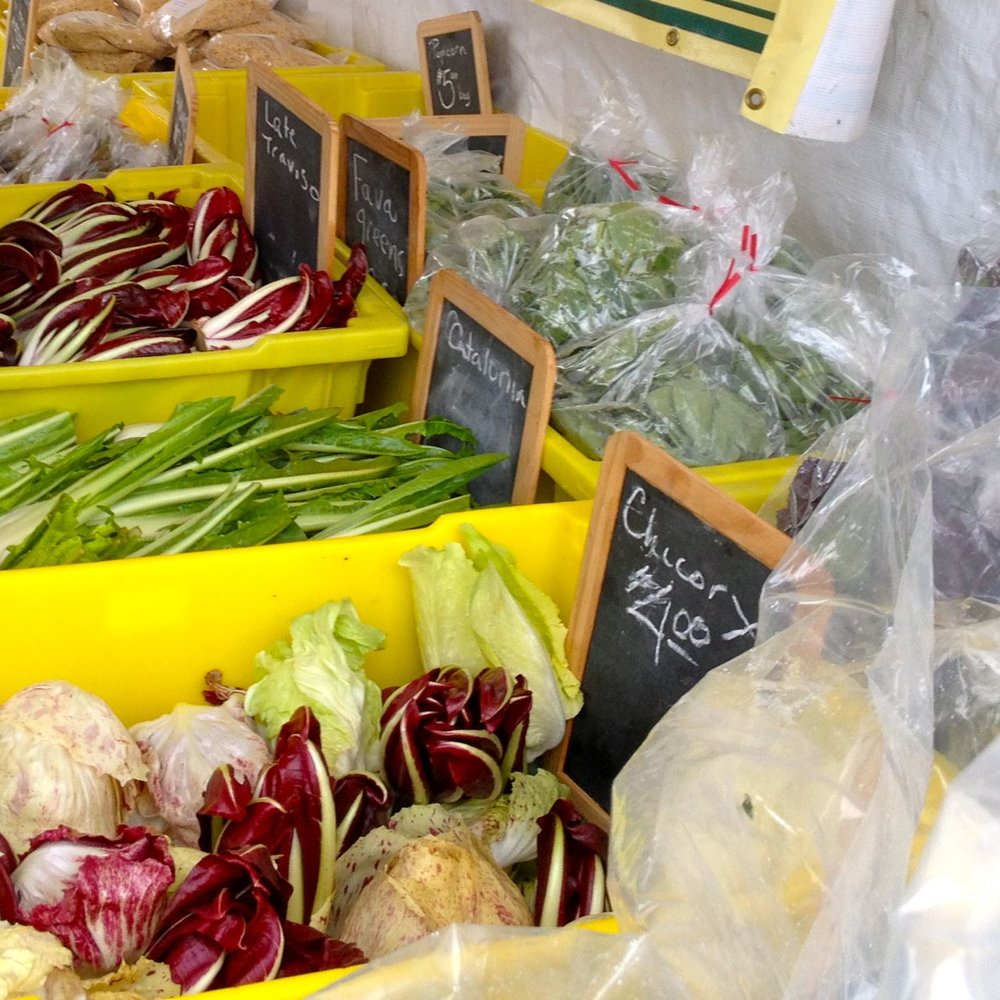
The late Treviso-type chicories are considered the very finest of the tribe. With their elegant arching leaves, white ribs and dark red leaf blades, and a distinct flavor with a hint of nuttiness, they are in a class of their own. Split in half, they grill or sauté well. For a finger salad, we quarter them lengthwise and dress them simply with oil and vinegar, maybe a bit of anchovy or lemon. Or you can break apart the heads, dress and add a little bit of chopped hard boiled egg. Keep the dressing subdued, sotto voce.
Sunday, you will notice a fair amount variation in the heads of this chicory. The people producing the seeds for this variety are doing a poor job of selecting their breeding population, or grex. They are just banging out the seed. As we harvest these chicories, we are carefully selecting our own grex with more tightly drawn characteristics. These we have marked with flags and we will retain them for seed production. We will save around 100 plants for the purpose. Because chicories cross-pollinate, we will root out any other varieties and off-types. On field day, you will see this work in progress.
Sweet Underground: horseradish, spuds, white Swedes, sweet potatoes.
Cornmeal: Amish Butter and Roy's Calais Flint
We put the cornmeal in a glass mason jar, and it is fine in the freezer for a few months. The glass protects it from picking up the flavor of other foods in the freezer.
Popcorn: Amish Butter.
Pulses: Chick peas and the following beans: Zolfino, Tarbais, Borlotto Lamon, Purgatorio, Dutch Bullet, Cranberry
Winter Squash
Preserves: Pozegaca Prune, Italian Prune, Damson, Green Gage, Tart Cherry, Purple Raspberry, Red Raspberry, Loganberry, Gooseberry, Red Currant, Black Currant
The Measure of a Farm
Farm income and deductions are declared on the Schedule F of the personal income tax form. Every five years, the USDA conducts a census of people who file a Schedule F or a corporate return indicating farming as a business activity. Last year, 2012, was a reporting year for the Census of Agriculture, and we submitted our report on the 4th of February, right at the deadline. A response is required by law, and we are now spared a visit by a determined census enumerator.
The author of the first book on agriculture (De Agri Cultura) from around 200 BC was Cato the Censor. It is a good book on farming. As his title indicates, he also served a term as censor, the person responsible for maintaining a census of citizens. The censor was also responsible for public morals, hence the modern definition. Although modern census enumerators have no role in determining public morals, they are also not so well versed in agriculture as Marcus Porcius Cato was, so it made sense to send our answers in on time. Old Marcus was also a pecuniary and heartless s.o.b., as well as a nativist concerned about the encroachment of all things Greek, so we might have sent in the census even in his day to avoid hearing his extreme political views. Even today, the libertarian Cato Institute, its name and character derived from the Roman's family, still has its shorts twisted up about Greece. La plus ça change . .
Aside from avoiding pesky enumerators, we willingly submit our farm data because the Census is used by government agencies and advocacy organizations to shape agricultural policy. If small market farms such as ours under-report, we lose visibility and a place at the table in policy debates. It takes a few hours to assemble the information and fill out the form. For highly diversified farms such as ours, it is a daunting task easy to put off until the very last minute.
Filling out the 24-page form is also frustrating because the structure of the questions reflects commodity farming where the production is sold as just so many widgets grown and harvested in standard units. Everything is reported in acres, whereas we measure our plantings in row feet or trees planted. For example, we planted 20,000 row feet of corn, and have no idea how many acres that is. Grains are reported in bushels, and legumes in hundred-weights harvested. The list of crops mirrors a suburban Safeway, not a vibrant urban market. With 72 different crops, tracking their individual yields is an utter waste of time; what is important is the picture that emerges from the mosaic, and the bank balance on the 31st of December. In many cases, we can back-out the numbers, others are wild guesses, and how on earth do you report frikeh?
There are signs of progress. For example, the national census now includes questions about organic certification, community supported agriculture (CSA) and farmers' markets. Nonetheless, the data garnered from those questions will give only a rough idea of how farming is changing. The balance of questions are grounded in the past, and will not provide a good sense of how agriculture is changing.
The USDA also manages field offices at the state level. As a matter of principle, we refuse to participate in those surveys that do not include the question of whether or not the crop is certified organic. Before the National Organic Program (NOP) was implemented, we were sampled in a detailed survey assessing chemical use on fruit crops. Press releases accompanying the survey's results lauded a drop in chemical usage on fruits as though farmers were using fewer chemicals across the board. Knowing that our organic farm was part of a small sample that drove that conclusion stuck in our craw. When we complained, we were told there was no generally accepted definition of organic so they couldn't collect that information.
In 2006, four years after NOP adoption, we were again included in the sample of the chemical use survey. Even though there were now legally binding national standards of what constitutes organic farming, the survey still did not collect that information, so we sent a letter explaining our refusal to answer. The director wrote back stating that it wasn't important to the survey on chemical usage to separate out farms that "have non-traditional production practices." The letter chided us for not participating and noted that "we will use computer models to estimate your information." A textbook case of bureaucratic insouciance. With a well-practiced script, we still carefully explain the enumerators who visit or call why we refuse to participate. Amazingly, a survey of Oregon farms issued in December 2012, a decade after the NOP adoption, still collects no information about the organic certification of the state's crops. It sits, untouched, on the desk.
Agricultural statistics are mired in the late 20th century industrial model of agriculture. The practices and marketing the USDA quaintly considers "non-traditional" are as old as agriculture itself. Heck, we still heed Cato's advice on a wide range of farm practices, even though his politics were obnoxious. With time, fresh ideas will creep into the census, but it is a slow process that needs some obdurate farmers to nudge it along.
See you all Sunday,
Anthony & Carol Boutard
Ayers Creek Farm
